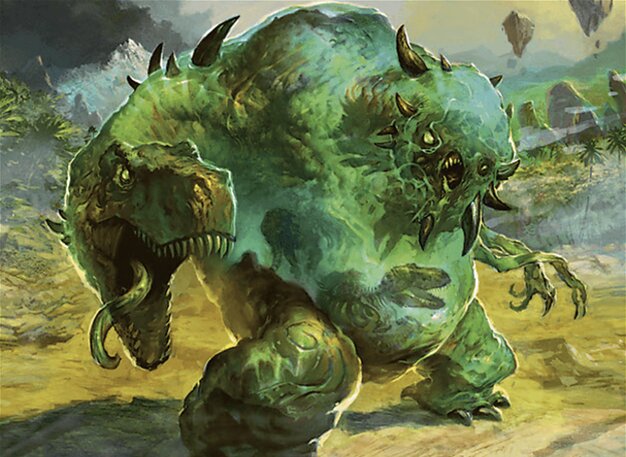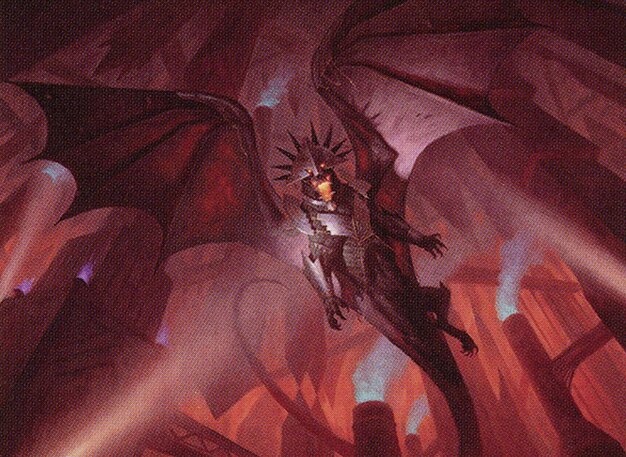Deck & Commander Strategies

Liliana, Heretical Healer
Leverages graveyard recursion and zombie tribal synergies to control the board and generate value, aiming to win around turn six with a critical mass of zombies.

The Mimeoplasm
Utilizes graveyard manipulation and creature copying to generate board presence and advantage, focusing on slimy, incremental value and control.

Queen Allenal of Ruadach
Builds a token army of knights and soldiers, using buffs and token doubling effects to overwhelm opponents with a thematic, story-driven creature swarm.

Ziatora, the Incinerator
Focuses on graveyard synergy with spooky creatures like werewolves and vampires, pumping them and creating treasure tokens to ramp and strike aggressively.
Gameplay Insights
- 1
Players utilized utility lands and mana ramp early to accelerate their strategies and establish board presence.
- 2
The use of graveyard interaction was central to multiple decks, allowing for recursion and value generation throughout the game.
- 3
Token doubling and army-wide buffs played a pivotal role in the Queen Allenal deck’s approach to overwhelming opponents.
- 4
Tapping opponents' lands to slow down their mana development was a subtle but effective disruption tactic observed.
- 5
The game balanced between aggressive creature swarms and controlling graveyard synergies, highlighting diverse win conditions coexisting in multiplayer Commander.
Notable Cards
-

Woodland Cemetery
-

Exotic Orchard
-

Ziatora, the Incinerator
-

Liliana, Heretical Healer // Liliana, Defiant Necromancer
-

The Mimeoplasm
-

Queen Allenal of Ruadach
Gameplay Summary
The game featured four players piloting distinctly themed decks that showcased a variety of strategies centered around graveyard synergies, token generation, and aggressive creature interactions.
Early turns saw players establishing their board states with mana ramp and utility lands while setting up their graveyard-centric engines.
The Liliana deck focused on graveyard shenanigans and aimed to leverage recursion and zombie tribal synergies to win around turn six.
Meanwhile, the Mimeoplasm deck embraced slimy graveyard manipulation and copying creatures to generate value and control the board. The Queen Allenal deck centered around token production and army-wide buffs, building a narrative-driven army of knights and other creatures.
The Ziatora deck opted for a spooky theme with werewolves, vampires, and graveyard interactions, aiming to pump creatures and generate treasure tokens to fuel further aggression.
Key moments involved players deploying powerful utility lands and spells to accelerate their game plan, with some players tapping opposing resources to slow down opponents.
Despite some initial slow starts, the game evolved into a multi-layered battle of incremental advantage through recursion, token doubling, and creature buffs, all vying for dominance in the multiplayer setting.














![Commander VS S5E1: Liliana vs Tasigur vs Kangee vs The Mimeoplasm [MTG Multiplayer] thumbnail](https://i.ytimg.com/vi/u35l-cgkQEY/sddefault.jpg)



![Commander Versus Series: Mimeoplasm v. Melek v. Maelstrom Wanderer v. Prossh [MTG Multiplayer] thumbnail](https://i.ytimg.com/vi/H3JROxdcaPo/sddefault.jpg)






![Commander VS S1E1: Nissa v.Jace v. Liliana v. Chandra [MTG Multiplayer] thumbnail](https://i.ytimg.com/vi/_oze3hbkW8g/sddefault.jpg)




![Zockt uns Dennsen in Magic ab?! | Herumkommandiert #10 | EDH Commander Gameplay [Deutsch] thumbnail](https://i.ytimg.com/vi/skfLxrOTZgw/sddefault.jpg)








